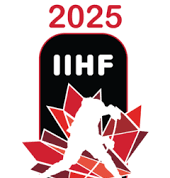by Peter Preteroti
This is the first in a series of articles about Junior Hockey in New York State. This month we will examine what Junior hockey is and what teams play within the boundaries of New York.
The goals of junior hockey are to develop and promote to a higher level, highly skilled and motivated players who are 15-20 years of age.
The program is available to high school students and graduates who seek a greater or different challenge than that which might be available through their prep school team, high school varsity or club team or area 18 & under teams. The principal purpose of this development program is to prepare the athlete for career advancement either in a collegiate program or a professional opportunity.
Junior hockey leagues/teams are certified, annually, by the USA Hockey Junior Council, in the following classifications: Tier I; Tier II and Tier III. There are also Junior programs that do not register with USA Hockey. For the purpose of our article, we will focus on the USA Hockey member teams.
Tier I is the highest amateur level in USA Hockey and those players have all expenses covered for them. This includes all ice fees, equipment, and room and board expenses. These teams are usually for profit and they derive most of their income from paid gate and marketing agreements. These teams are usually in small city markets where the Junior team is the “big” game in town.
Tier II is similar with the only exception being that the player is responsible for his own room and board. All other expenses are covered by the team. Once again these teams generate most of their income from gate and marketing fees.
Tier III is tuition based hockey. Players pay to play hockey and are responsible for all cost and expense associated with the team. Rates to play can range from 5k to 9k depending on where the team is located. In the larger markets in the east, ice costs drive the price up as ice costs per hour can vary between $190 and $450 per hour.
The goals of Junior hockey include:
- Skill Development – To provide talented young players with the opportunity to develop in an organized, structured, competitive and supervised environment.
- Quality Coaching – To provide considerable training time, quality coaching instruction and concerned oversight.
- Social Maturity – To provide players with a healthy, constructive environment in which to develop socially.
- Educational Advancement – To provide assistance and opportunities for the accomplishment of the participant’s educational goals.
- Recruiting Exposure – To provide players with exposure to collegiate and professional scouts and recruiters.
- Advanced Competition – To provide players with exposure to national and international competition.
- Time Management – Players need to learn how to manage their time by balancing work, school and the high demands of his hockey team, especially while on the road.
- Protection of Amateur Status – To protect, most importantly, the amateur status of all participants under the rules and guidelines established by the International Ice Hockey Federation, USA Hockey, Hockey Canada, the NCAA, the NAIA and the National Federation of High Schools.
New York State has the largest number of USA Hockey registered Junior teams within their boundaries. These teams include:
(West): Buffalo Junior Sabres OPJHL; Buffalo Blades GOJHL; Buffalo Stars Empire; Buffalo Stars ESHL; Rochester Maksymum EJHL; Rochester Maksymum Empire
(Central & North): Syracuse Empire; Adirondack Empire
(East): Applecore EJHL; Applecore Empire; Applecore ESHL; Brewster Empire; Brewster ESHL; Suffolk MET; Suffolk ESHL; Long Island Royals MET; NY Saints MET; NY Bobcats AJ; Metro Moose MET
Next month we will examine some of the challenges being faced by Junior programs and the changing face of Junior Hockey in the Un






